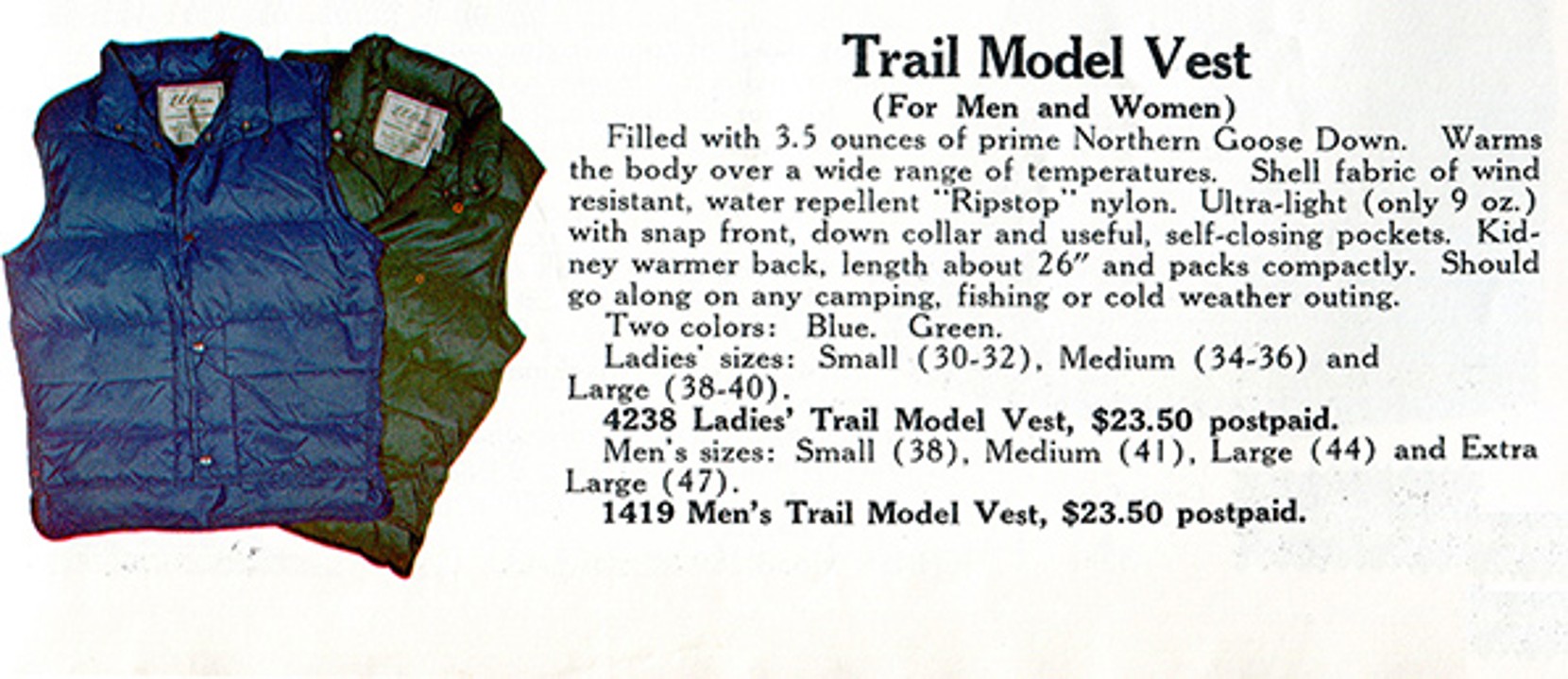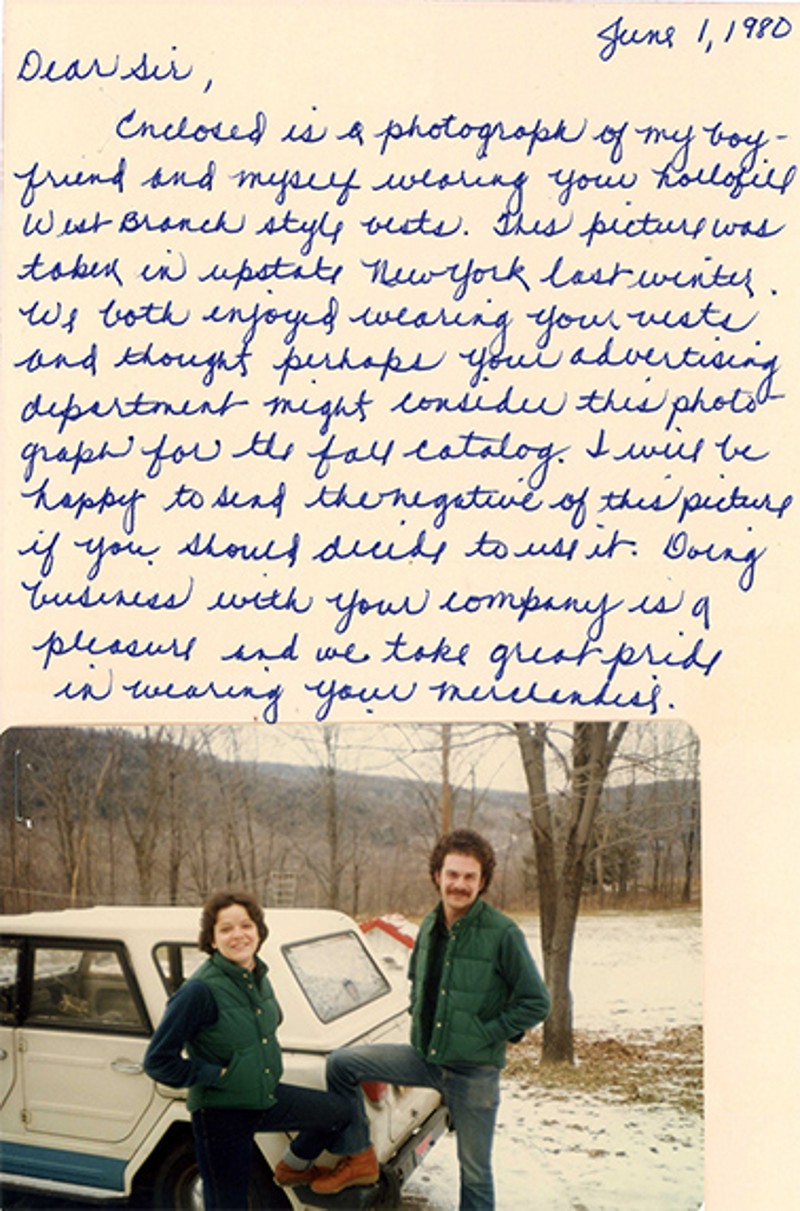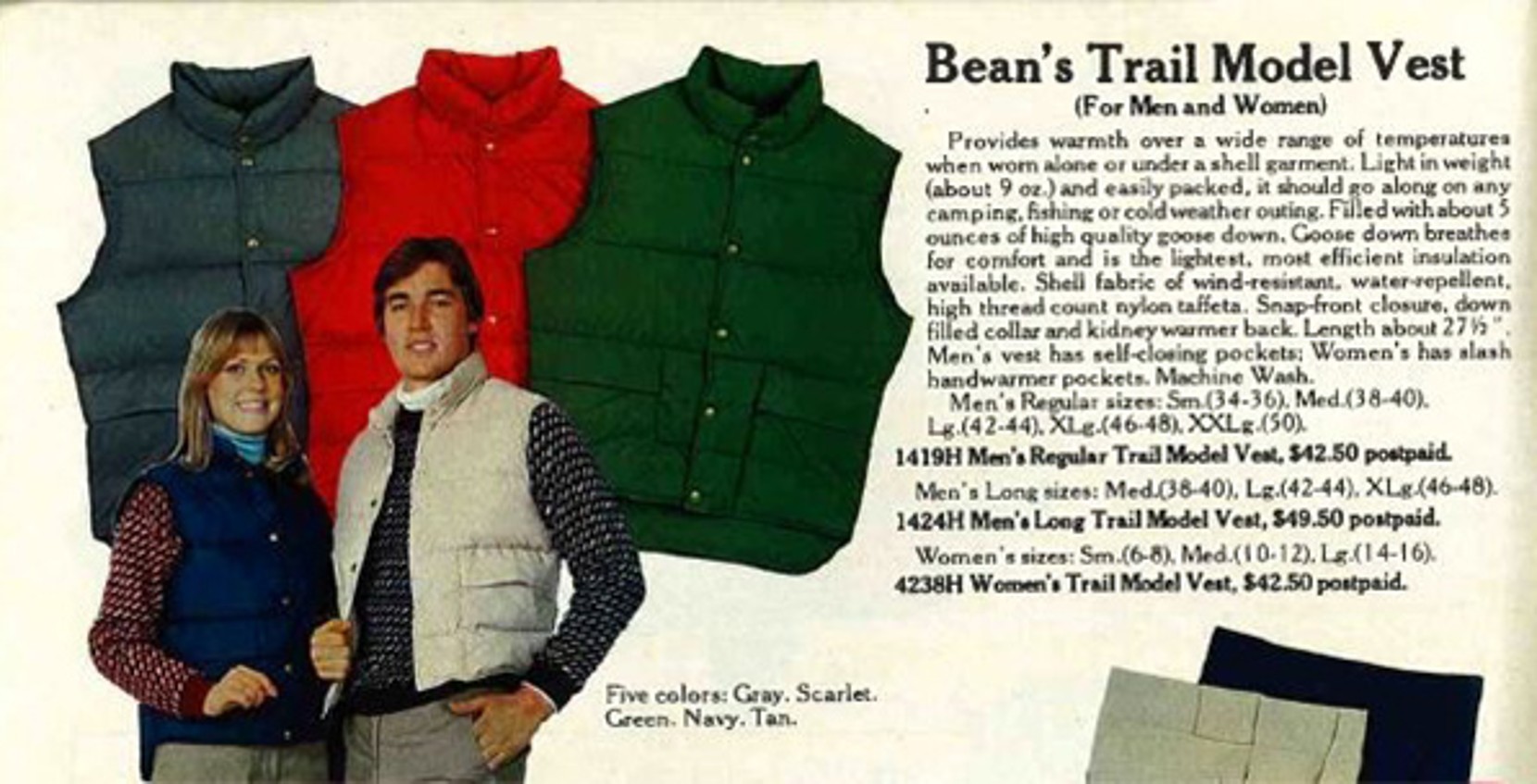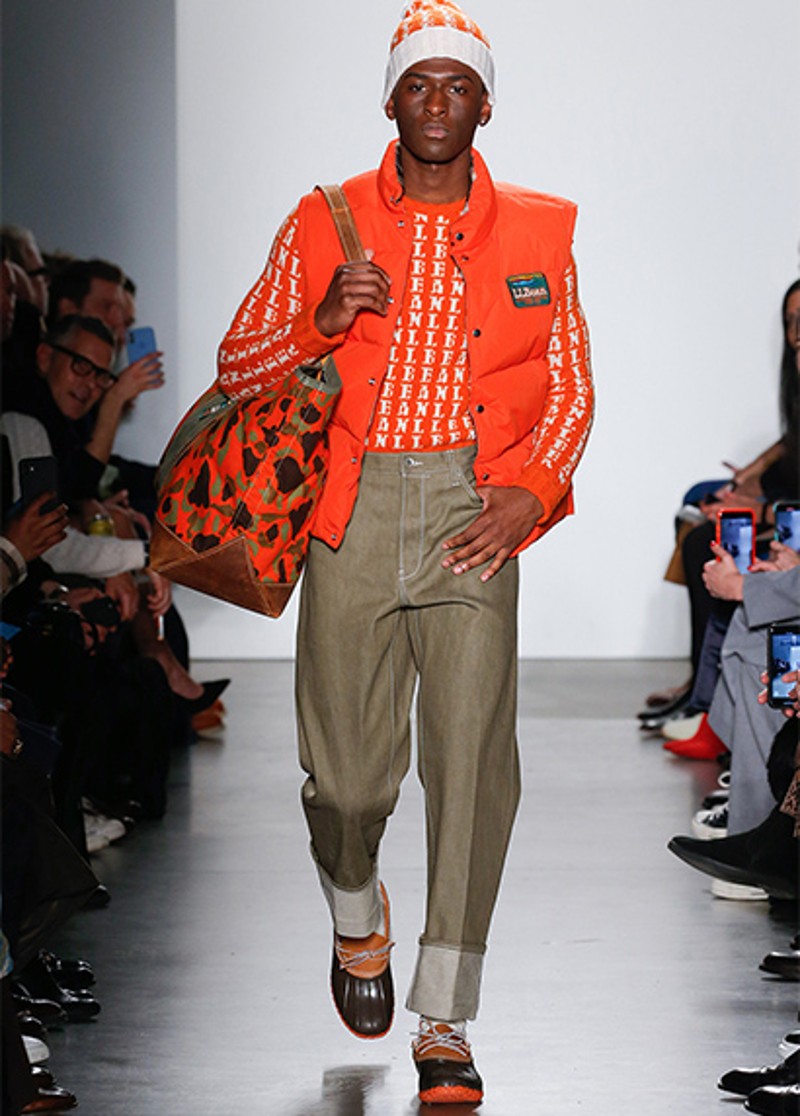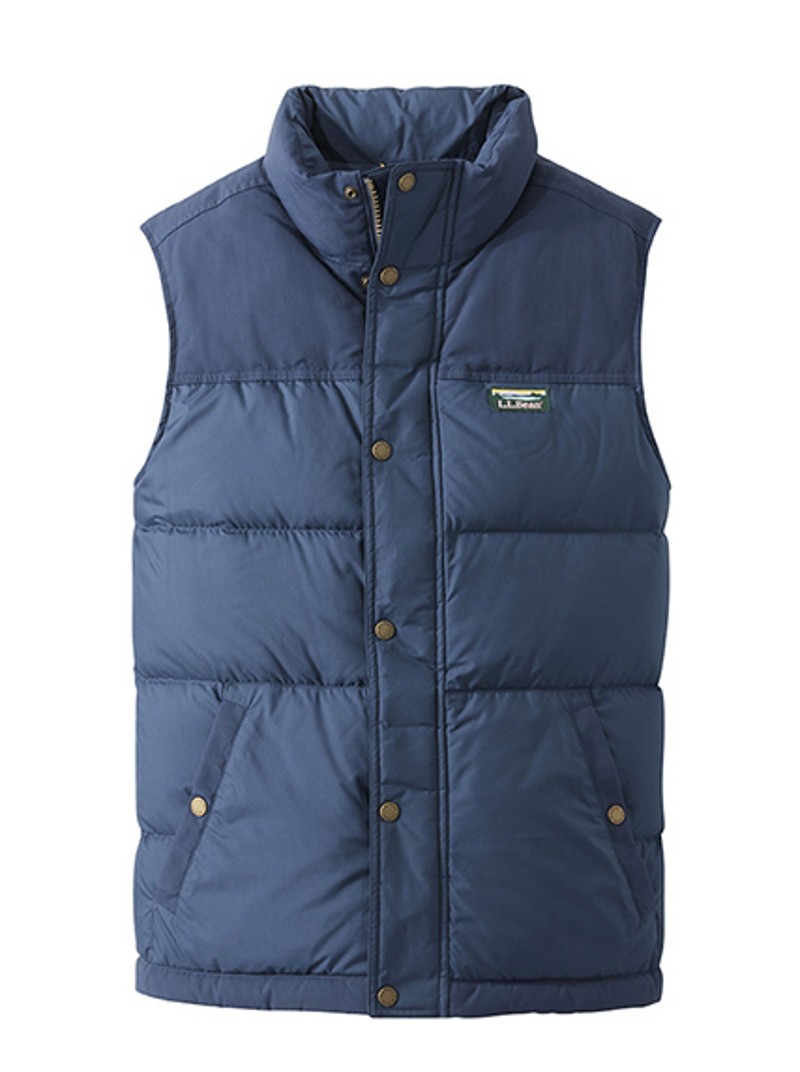Freeport, ME, October 27, 2020
The Rise of the American Backpacker and the Vest that Kept Them Warm
L.L.Bean Trail Model Vest pictured in the 1975 company catalog, four years after its debut
1971 was a momentous year in American history. Just two years after Woodstock, '71 had been lauded as one of the greatest years in rock ‘n roll, with airwaves dominated by the likes of Led Zeplin, Janis Joplin and David Bowie. As America and the world were rattled by the Vietnam War, that same year, Apollo 14 would land on the moon, America’s legal age to vote was lowered to 18, and the first floppy disc was created – one of several tech advancements of the early 1970s that have shaped the world we know today.
A photo and letter from two L.L.Bean customers in the 1980s in the green Trail Model Vest
Meanwhile – far away from anything connected to electricity – more and more people were connecting with the outdoors. For the first time, Americans of all ages were exploring the country’s most iconic hiking trails in droves, encouraged by trail advocate Edward Garvey’s “Appalachian Hiker: Adventure of a Lifetime.” The book was one of the first comprehensive guides to the Appalachian Trail, offering novice adventurers advice on everything from equipment to etiquette to techniques for the 2,000-mile journey from Georgia to Maine.
It was also a time before light, trail-ready gear was widely available, meaning, for example, that hikers were toting heavy canvas tents rather than the uber-lightweight polyester we’re used to today. L.L.Bean – already firmly rooted as an outfitter of adventurers of all skill levels – introduced in that same year a new layering garment that would change lightweight outerwear for years to come.
Enter the L.L.Bean Trail Model Vest. It was meant for a new class of outdoor enthusiasts – minimalist backpackers seeking the restorative power of the outdoors. The vest was developed as a lightweight, non-bulky layering piece made of ripstop nylon packed with quilted squares of down – a natural insulator which prevents heat loss by trapping air. It quickly became one of L.L.Bean’s best-selling cold weather garments that, like many of L.L.Bean’s longstanding favorites, made its way from the outdoors into American fashion. Most recently, it served as inspiration for L.L.Bean’s first-ever collaboration with menswear designer Todd Snyder, which features L.L.Bean’s most iconic apparel and footwear in classic silhouettes, colorways and patterns.
“Our down vest has become a must-have item since it first debuted, and every year our team looks for new ways to keep it fresh and looking great,” said Jon Beane, outerwear development manager for L.L.Bean. “Beyond its timeless appearance, our most important goal remains functionality – making sure our customers stay warm, dry and comfortable as they explore the outdoors.”
Pictured in L.L.Bean’s 1983 catalog, the Trail Model Vest became a cold-weather mainstay, from hiking trails to college campuses
L.L.Bean’s modern-day version is now known as the Mountain Classic Down Vest, with its warmth and durability tested through the same rigorous process as in 1971. Through new down developments, however, L.L.Bean has made huge gains in sustainability, with all down vests now made from 100% recycled materials and using Responsible Down Standard (RDS)-certified, water-repellent DownTek insulation. The Ultralight 850 Down Vest represents L.L.Bean’s latest advancement in down outwear, offering an even lighter-weight, water-resistant layering option for cold temperatures.
Since 1971, the down vest has become a mainstay in L.L.Bean’s down product line, alongside jackets, parkas and sleeping bags. No matter where the trail leads, the down vest is versatile, warm and down-right classic.
The down vest made its debut at New York Fashion Week 2020 as part of the L.L.Bean x Todd Snyder collaboration
The 2020 Mountain Classic Down Vest

